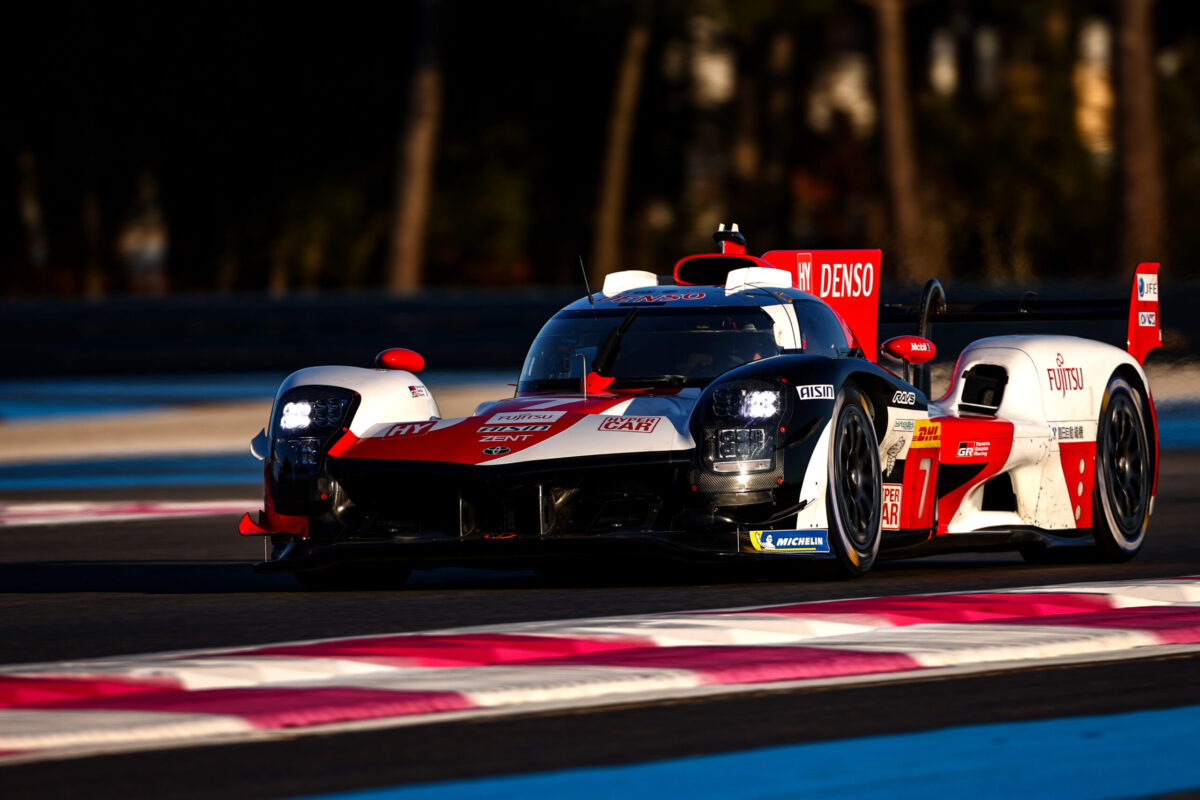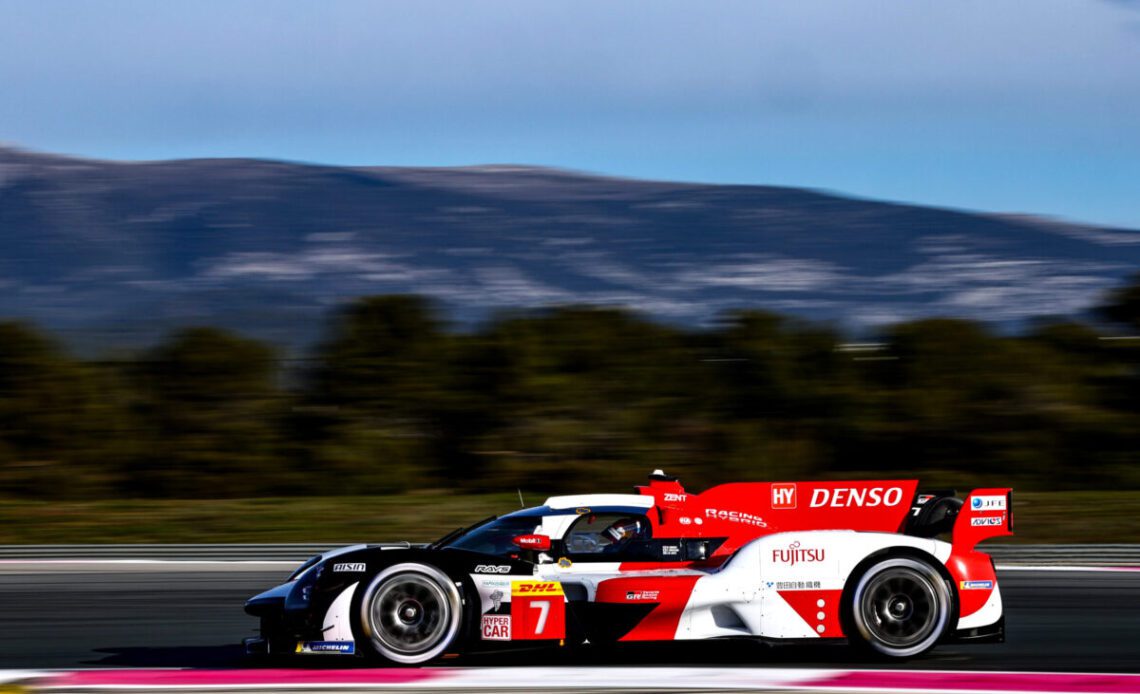Click here to read about Toyota’s TSO50 Hybrid from the LMP1 era
The GR010 Hybrid features state-of-the-art aerodynamics optimised for efficiency and developed using powerful CFD software and wind tunnel testing. The technical regulations permit only a single homologated bodywork package with only one adjustable aerodynamic device. The regulations state there can be no improvement in power with torque sensors fitted to the Hypercars’ driveshafts. There could be little performance gain from aerodynamics due to the cars fitting into a narrow lift/drag graph window.
That’s not to say that there cannot be development. Aerodynamics can be improved to widen the car’s operating window and make it behave better in a broader range of conditions. The power band of the engine can also be improved, though any performance improvement is limited by the FIA’s ‘joker’ package.
2023 development
The chassis is the same going into 2023, although it has been developed for weight-saving purposes. Changes to the car were surprisingly few, given the original version was built to a set of regulations that has changed dramatically in the last three years. Originally, the minimum weight was 70kg higher than the car raced in 2021. The team could run a closed front differential, and the minimum deployment speed for hybrid power was only applied in the wet. There was no cockpit-adjustable anti-roll bar option for the LMH cars either, but that has now all changed.
 A revised engine, gearbox, and battery have been implemented in a bid to balance it better and make it more driveable in a wider range of conditions. It was something of a surprise that very little was done to the front Motor Generator Unit, given the large changes that were made to the regulations in terms of how it can be used.The change in deployment speed has massively reduced the benefit of the four-wheel-drive system, but it did not change anything in terms of sizing and weight because the front motor is still allowed to be 200kW.
A revised engine, gearbox, and battery have been implemented in a bid to balance it better and make it more driveable in a wider range of conditions. It was something of a surprise that very little was done to the front Motor Generator Unit, given the large changes that were made to the regulations in terms of how it can be used.The change in deployment speed has massively reduced the benefit of the four-wheel-drive system, but it did not change anything in terms of sizing and weight because the front motor is still allowed to be 200kW.
The team has changed the aero for the car slightly, introducing smaller rear wing end plates and improving the cooling to the brakes through new vents at the front and rear. New dive planes have also been added to the front of the car, and the bodywork has been further developed to facilitate quick changes in the pit.
While the team focussed on serviceability, the biggest cause for concern was the electronics in the car, which have caused delays at multiple…
Click Here to Read the Full Original Article at Racecar Engineering…

